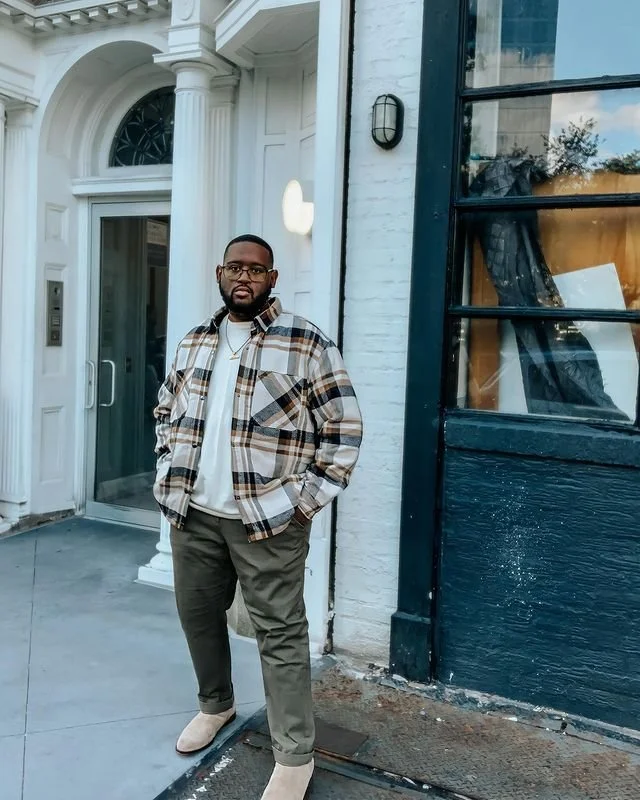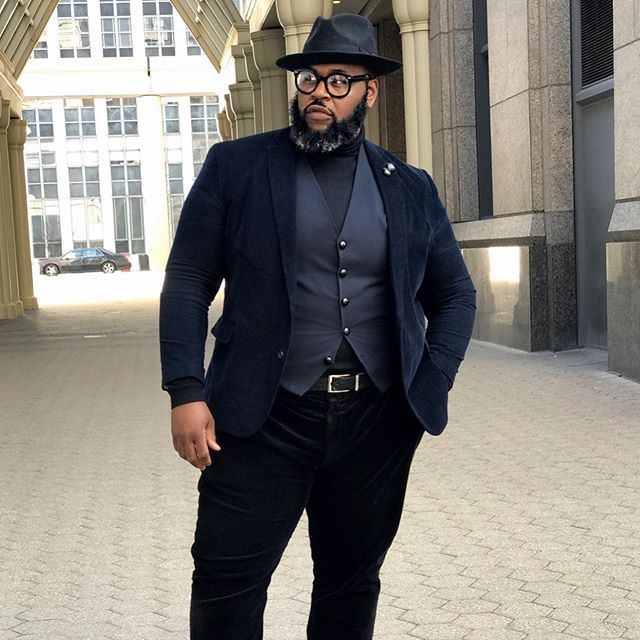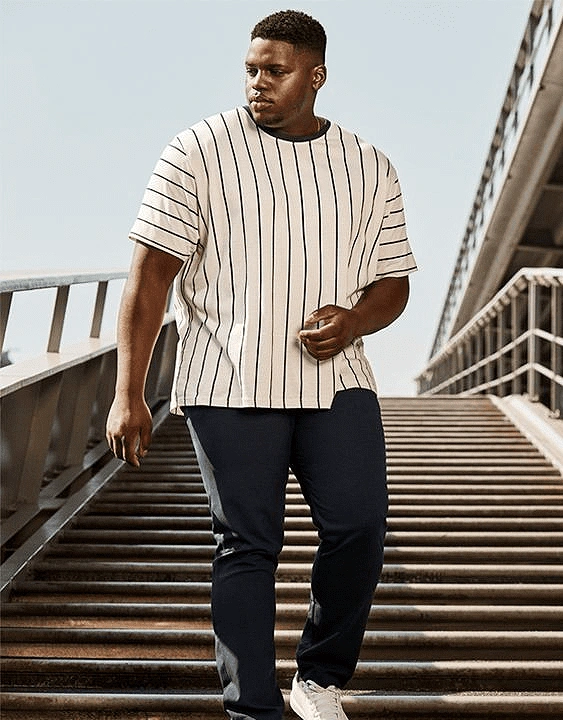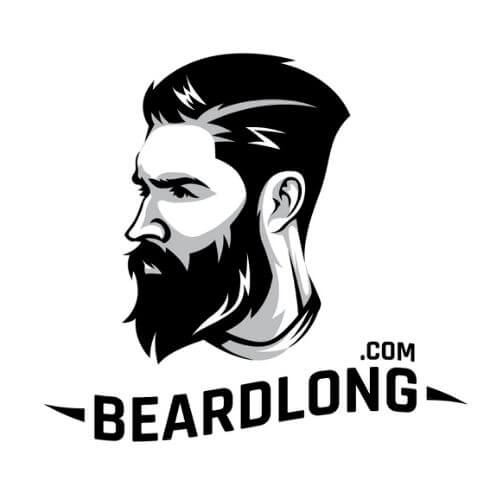Actionable, research-backed, and written for real men who don’t want gimmicks — just results.
If you’re a bigger guy who wants to look slimmer and more attractive, the good news is this: small, precise style changes produce big visual impact.
This article gives you 15 practical tricks—each with why it works, how to do it, product/fit examples, and quick dos/don’ts.
Where scientific findings matter (how color and lines affect perception, the importance of posture and nonverbal confidence), I’ve cited the research so you know what’s evidence-based and what’s conventional wisdom.
Quick primer: why clothing changes perception

Clothing is a powerful social signal. Studies show that what you wear affects how others perceive your competence, attractiveness, and even height.
Clothes change first impressions because they alter silhouette, color contrast, perceived proportions, and nonverbal presence.
Tailoring and posture both improve perceived status and attractiveness because they create cleaner lines and more confident body language. Pubmed
1 — Get the fit right: not tight, not baggy (the Goldilocks rule)

Why it works: Clothing that’s too tight emphasizes bulges; clothing that’s too loose creates bulk and hides your shape. The right fit follows your body’s lines without clinging. Research and stylists agree: correct fit is the single biggest visual improvement you can make. Westwood Hart
How to do it:
- For shirts: shoulder seams should meet your actual shoulders. Sleeves should hit just past the wrist bone when arms are relaxed. The chest and torso should allow a comfortable fist’s worth of room — not flapping, not skin-tight.
- For trousers: pick a straight or slightly tapered leg. No cargo-style bagginess. The waist should sit where your trousers can be comfortably belted without bunching.
- For jackets: shoulders are king. A well-fitting shoulder line makes tailoring easier and creates a cleaner silhouette.
Quick shopping tip: Try “size up, tailor down” — buy slightly larger off-the-rack and have a tailor take in the waist, chest, and sleeves. It’s cheaper than bespoke and delivers the shape that flatters.
2 — Structured pieces over soft, shapeless fabric
Why it works: Structured fabrics (wool blends, cotton twill, denim) hold clean lines; soft, clingy fabrics cling to the body and reveal lumps. Structure creates vertical planes that read as leaner.
How to do it:
- Choose lightweight wool blazers, cotton poplin shirts, or heavier chambray rather than limp jersey or clingy modal.
- Look for jackets with light shoulder pads or a subtle canvas — not big, but enough to create framing.
What to avoid: ultra-soft, clingy T-shirts and fabrics that accentuate sweat or cling. These amplify texture and make the body look wider.
3 — Monochrome and tonal dressing (use color to merge silhouette)

Why it works: Wearing the same color or closely matched tones top-to-bottom reduces contrast and visually “merges” the body into a continuous line, which often reads slimmer. Some scientific work shows darker clothing and lower lightness values are perceived as slimmer and more attractive. ScienceDirect
How to do it:
- Create outfits from similar hues (navy shirt + navy chinos; charcoal tee + slate jeans).
- If you want contrast, do it in small doses (darker shoes, lighter accessory) rather than a high-contrast top and bottom.
Quick example: Navy button-up + navy chinos + brown boots — the continuous dark line helps lengthen and slim the look.
4 — Use darker colors strategically (but not only black)
Why it works: Dark matte colors recede visually, reducing perceived size. But black everywhere can look flat — and research suggests black is attractive partly due to a slimming effect, but color that suits your skin tone matters too. ResearchGate
How to do it:
- Use dark neutrals (charcoal, navy, olive, deep burgundy) as base pieces.
- Bright colors or lighter pieces can highlight features you want to show (face, shoulders) — use them selectively (shirt under a dark blazer, patterned pocket square).
5 — Vertical visual lines — subtlety wins (not loud pinstripes)

Why it works: The belief that vertical stripes always slim is oversimplified.
Some research shows vertical lines can create a taller look, but other studies show the effect depends on context and proportion; bold vertical pinstripes can add attention to body width if used poorly. Subtle verticality — seams, vertical pleats, long coats — works best. sbp-journal.com
How to do it:
- Opt for vertical design elements: long single-breasted coats, vertical seams, elongated lapels, vertical ribbed knits.
- Avoid oversized bold pinstripes that interrupt the eye in a way that can emphasize width.
Quick styling: A single-breasted, unbuttoned coat that falls below the hip creates a clean vertical line and lengthens the torso.
6 — Tailor your jackets: single-breasted, structured, and slightly nipped
Why it works: A single-breasted jacket with a small waist suppression and a longer length visually slims; double-breasted jackets can add bulk if they’re oversized. Tailoring redistributes fabric so the silhouette looks intentional. Skilled tailoring can transform off-the-rack pieces to flatter large bodies dramatically. Westwood Hart
How to do it:
- Go single-breasted, 2–3 buttons max.
- Add slight waist suppression (even 1–2 inches of tapering makes a big difference) and choose a length that hits the mid to lower hip.
- Ensure lapels are proportional (not extra-wide).
7 — Collar & neck choices: V-necks, open collars, and small lapels

Why it works: Exposing a bit of neck creates vertical space and directs the eye upward toward the face. V-necks and open-collar shirts elongate the throat, creating a leaner impression.
How to do it:
- Use V-neck sweaters or T-shirts rather than high crew necks if you want to lengthen the neck.
- Wear open-collar button-ups with an inside layer for contrast.
- Avoid tight, high necklines that cut across the neck and make the torso appear shorter.
8 — Control bulk with layering, not extra volume
Why it works: Layering can create depth and vertical lines — but avoid over-layering bulky items that add mass. Thin, targeted layers (light undershirts, unstructured jackets) add shape without volume.
How to do it:
- Use a fitted base layer, then a structured mid-layer, then a coat or jacket.
- Choose thinner, warmer fabrics (merino, fine wool) rather than puffy quilted layers.
Practical combo: A slim merino tee + mid-weight unlined blazer + long wool overcoat = warmth, shape, and sleek lines without bulk.
9 — Proper trouser fit and break: keep legs straight and long
Why it works: Wider or baggy trousers create a blocky lower half. A straight or slightly tapered leg that sits clean on the shoes extends the visual line downwards.
How to do it:
- Aim for a straight cut or slight taper from knee to ankle.
- Keep a small break (the fold where trouser meets shoe) or no break for a modern look — avoid heavy bunching.
- Choose darker pants relative to your top for slimming; lighter pants will draw attention.
10 — Shoes matter: chunky feet vs. proportional shoe balance

Why it works: Shoes anchor the outfit. Big, clunky shoes can make legs look stumpy; overly small shoes can look out of proportion. Balanced, clean shoes extend the leg look.
How to do it:
- Choose streamlined boots or minimal sneakers for a sleek silhouette.
- Darker shoes with a low profile often look more elongated.
11 — Use patterns for focus, not distraction (chest & face focus)

Why it works: Patterns draw the eye where you want it. A patterned shirt near the face (subtle checks, small prints) draws attention upward. Distracting oversized prints on the stomach will do the opposite.
How to do it:
- Use small-to-medium patterns on shirts near the face.
- Keep the torso area simpler and darker.
- If you love patterns, use them on accessories (pocket squares, scarves).
12 — Grooming, haircut, and facial hair: frame the face (not the body)
Why it works: A good haircut and well-kept facial hair focus attention on the face, improving overall attractiveness. People perceive well-groomed faces as healthier and more attractive, which overshadows body evaluations.
How to do it:
- Maintain hair with a modern cut that adds vertical texture (short on the sides, longer on top can lengthen the face).
- Keep facial hair intentional and trimmed; a short beard or tidy stubble creates definition on the jawline.
- Care for skin — even simple routines (moisturizer + SPF) improve appearance.
13 — Posture & nonverbal presence: stand tall, breathe, open up
Why it works: Expansive, confident postures increase perceived attractiveness and presence. Studies show open body language and confident posture can compensate for being perceived as less attractive. Good posture lengthens the torso and reduces slumping that creates rolls or double-chin illusions. PMC
How to do it (micro-practice):
- Pull shoulders back by imagining a string pulling your chest up.
- Tuck the pelvis slightly and engage the core (standing as if you’re bracing for a hug).
- Practice for 2–3 minutes a day — posture improves quickly and shows immediately.
14 — Use optical tricks: vertical seams, long coats, and lapel placement
Why it works: Long, single-breasted coats, vertical seams, and lapels that create a visual centerline draw the eye up and down rather than across, making the torso appear longer.
How to do it:
- Pick a coat or jacket with a length that hits mid-thigh to knee — it elongates.
- Choose single-breasted jackets with a single vertical visual line when open.
- Avoid large horizontal chest pockets or thick waist belts that break the vertical eye flow.
15 — Confidence & simplicity: the final multiplier

Why it works: Clothing is part of a package that includes confidence. People respond positively to men who look comfortable and intentional.
Clean, simple outfits with one standout piece (a coat, a watch, or well-chosen shoes) signal competence and care—two huge attraction boosters.
Research finds clothing attractiveness and nonverbal confidence both shape social perception strongly. Pubmed
How to do it:
- Build capsule outfits: 3 trousers, 4 shirts, 1 blazer, 1 coat, 2 pairs of shoes.
- Keep grooming, shoe care, and cleaned clothes consistent — small details matter.
- Practice short daily rituals: 60-second posture check, 30-second shoe brush, 1-minute mirror check for stray hairs.
Common questions answered (real world, short answers)
Q: Do vertical stripes actually make you look thinner?
A: Not always. The research is mixed: some studies show vertical lines can elongate; others show no simple “vertical = slim” rule. Subtle vertical elements and overall proportion matter more than loud pinstripes. Use vertical seams and long coats rather than narrow pinstripes as a shortcut. sbp-journal.com+1
Q: Is black always best?
A: Black is slimming because it absorbs light, but it’s not the only option. Deep navies, charcoals, and rich olives can be more flattering and less harsh on skin tone. Choose dark neutrals that complement your complexion. ScienceDirect
Q: Should I hide my body with baggy clothes?
A: No — baggy clothes create boxy visual mass. The goal is fit + structure. Use tailoring or buy a size that allows tailoring for the best silhouette.
Q: Can accessories help?
A: Yes. Focal accessories (a textured scarf, good watch, or bold coat) draw attention and make the outfit look intentional. Keep them proportional.
Practical 30-day action plan (implementable steps)
Week 1 — Audit & basics
- Clean your wardrobe: remove stretched tees and ill-fitting clothes.
- Buy one dark neutral pair of trousers that fits (or have tailor adjust).
- Get a proper haircut and trim facial hair.
Week 2 — Tailoring & core purchases
- Take your best jacket and shirt to a tailor: adjust shoulders, sleeve length, and waist.
- Buy a structured blazer or unlined sport coat in a dark color.
Week 3 — Shoes, grooming, and posture
- Invest in one pair of clean boots or minimal sneakers.
- Start daily posture practice and a 2-step skincare routine (cleanser + moisturizer).
Week 4 — Fine-tune & confidence
- Build 3 go-to outfits from your wardrobe. Practice wearing them.
- Test one new trick (e.g., V-neck, long coat) and note how people react.
Evidence & community voices (short note on sources)
- Clothing matters: person-perception research shows dress shapes how people judge competence and attractiveness.
- Posture matters: nonverbal dominance/expansive posture increases perceived attractiveness and presence.
- Color & slimming: several studies find darker/lightness of clothing affect perceived body size and attractiveness; black often perceived as slimming, but skin-tone match and context matter.
- Real-world styling: tailors and big-men communities emphasize fit, shoulder, and jacket structure as the biggest transformation (community and stylist sources).
What to avoid (quick list)
- Baggy clothes that hide the body — they make you look boxy.
- Oversized horizontal chest graphics or high-contrast bands around the midsection.
- Shiny fabrics that highlight sweat and texture.
- Poor footwear — it ruins the whole look.
Final words: dress for who you are becoming, not who you were
Style isn’t about deception; it’s about communicating who you are.
These 15 tricks help you present a leaner, more put-together version of yourself so others see competence and confidence first.
Combine fit, structure, color, grooming, and posture — and the sum becomes greater than the parts.
Tasos Moulios is the founder of Beardlong. He loves trying different beard and hair styles and blogs about them. The tips he shares come from his own experience and love for what he does.

